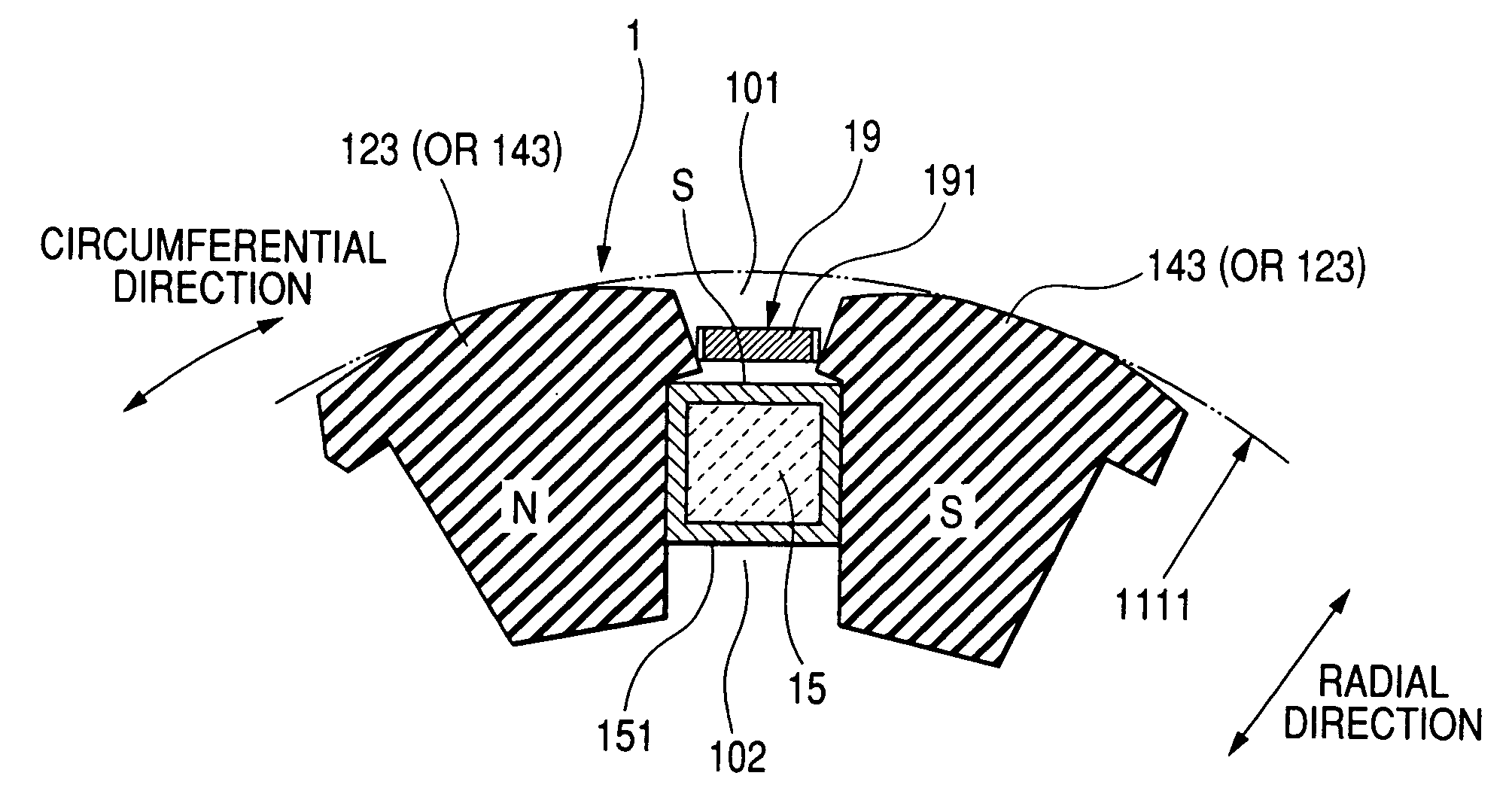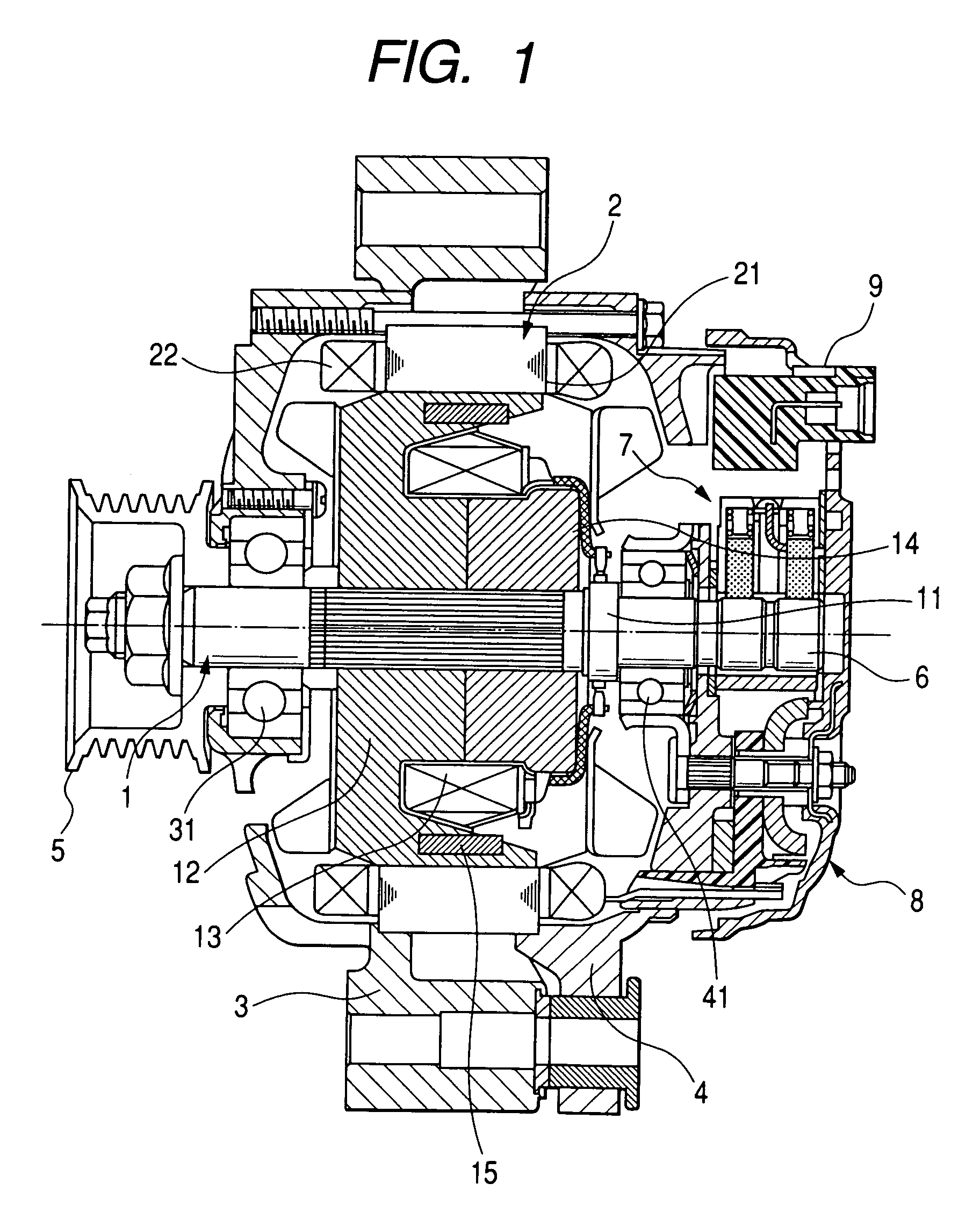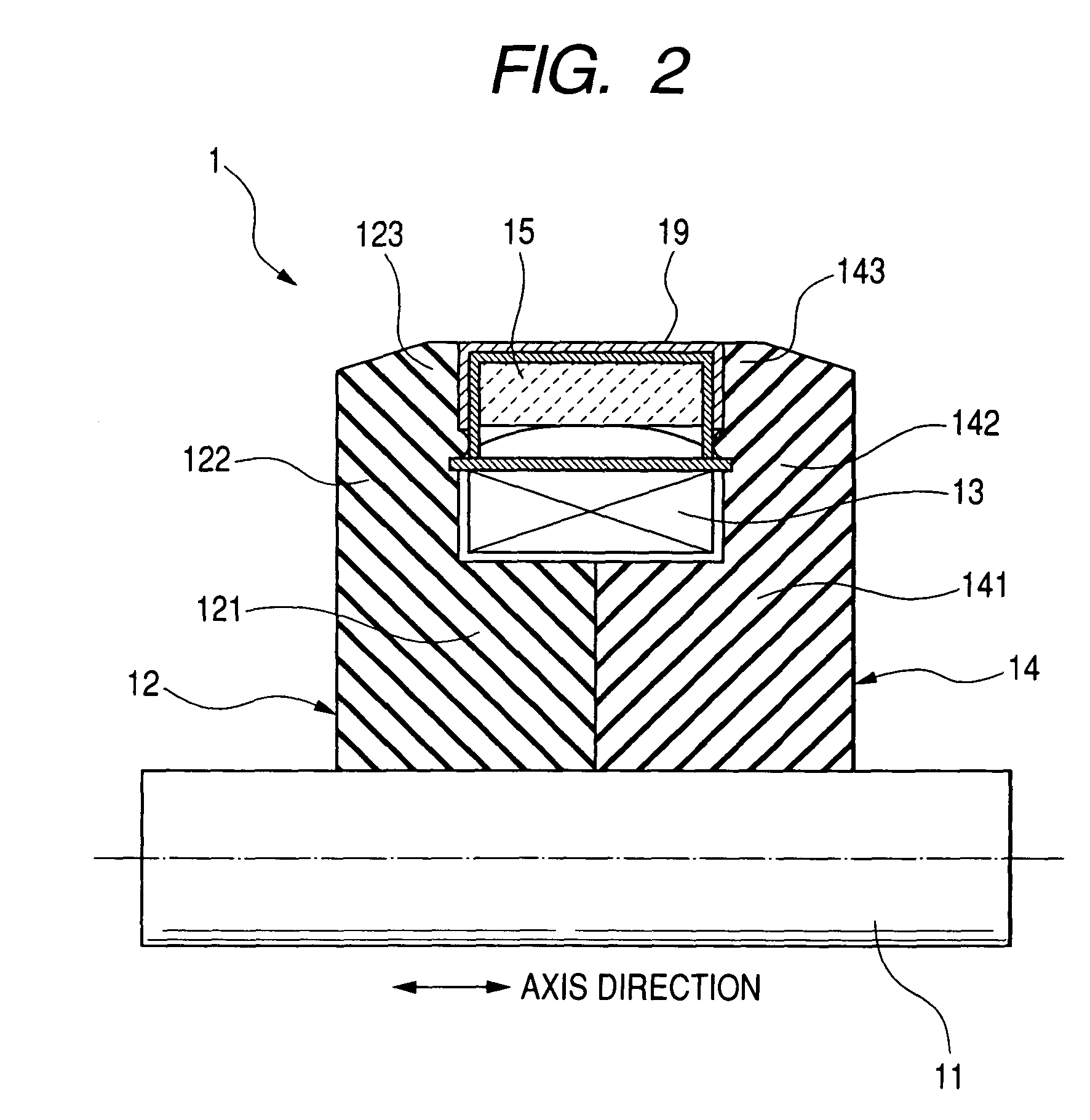Magnet protection mechanism for magnet body in rotor and magnet protection method
a magnet protection mechanism and magnet protection technology, applied in the direction of magnetic bodies, magnetic circuit rotating parts, magnetic circuit shapes/forms/construction, etc., can solve the problems of deteriorating a magnetic characteristic of the magnet component and reducing the durability of the magnet component such as the claw pole and the permanent magnet, and achieve the effect of easy detachment of the magnetic covering member
- Summary
- Abstract
- Description
- Claims
- Application Information
AI Technical Summary
Benefits of technology
Problems solved by technology
Method used
Image
Examples
first embodiment
[0050]A description will now be given of the magnet protection mechanism and a magnet protection method before the rotor 1 such as a Lundell type rotor core is incorporated into a vehicle alternator with reference to FIG. 2, FIG. 3, and FIG. 4.
[0051]FIG. 4 is an enlarged partial sectional diagram in the axis direction showing the permanent magnet 15 (as a magnetic body) and the magnet covering member 19 shown in FIG. 3 according to the first embodiment;
[0052]Before incorporating the pole cores 12 and 14 of the rotor 1 into the stator core 21 of a vehicle alternator, the pole cores 12 and 14 shown in FIG. 3 are magnetized by using the permanent magnets 15 of the permanent magnet portion that have been magnetized in advance. Because it is difficult to form a closed magnetic path in the pole cores 12 and 14 and the stator core 21 in the vehicle alternator before such an incorporating process, a magnet field is generated widely in the peripheral space of the pole cores 12 and 14 and the...
second embodiment
[0059]A description will now be given of the magnet protection mechanism according to the second embodiment of the present invention with reference to FIG. 5 to FIG. 8.
[0060]Similar to the first embodiment, the pole cores 12 and 14 of the rotor 1 shown in FIG. 3 are magnetized by the permanent magnets 15 that have been magnetized in advance before the incorporating process of the pole cores 12 and 14 of the rotor 1 into the stator core 21. At this manufacturing process, like the first embodiment, because it is impossible to form a closed magnet path in the pole cores 12 and 14 and the stator core 21 in the vehicle alternator, a leakage magnet field is generated widely in the peripheral space of the pole cores 12 and 14 and the permanent magnets 15. Such a leakage magnet field is concentrated in both gaps 101 and 102 between the adjacent claw poles 124 (or 143) and 143 (or 123). The distance between the adjacent claw poles 123 and 143 that are magnetized in an opposite direction beco...
first modification
(First Modification)
[0073]The first and second embodiments described above adopt a Lundell type rotor core as the rotor 1. The present invention is not limited by those embodiments. For example, the concept of the present invention regarding the magnet covering members 19 and 190 can be applied to a rotor having a configuration in which an outer peripheral surface of each of permanent magnets that are placed on a rotor core is exposed to the outside of the rotor core, such as a rotor mounted on a surface permanent magnet (SPM) synchronous machine.
PUM
 Login to View More
Login to View More Abstract
Description
Claims
Application Information
 Login to View More
Login to View More - R&D
- Intellectual Property
- Life Sciences
- Materials
- Tech Scout
- Unparalleled Data Quality
- Higher Quality Content
- 60% Fewer Hallucinations
Browse by: Latest US Patents, China's latest patents, Technical Efficacy Thesaurus, Application Domain, Technology Topic, Popular Technical Reports.
© 2025 PatSnap. All rights reserved.Legal|Privacy policy|Modern Slavery Act Transparency Statement|Sitemap|About US| Contact US: help@patsnap.com



